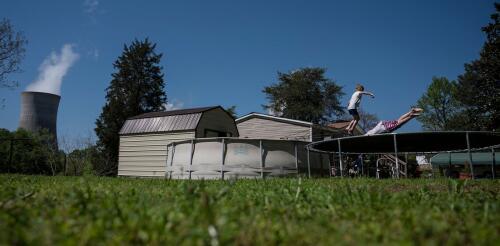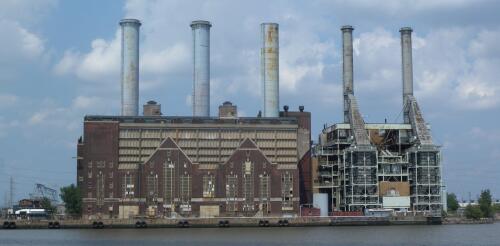Power plants
Electric power generation in the U.S. is shifting rapidly away from fossil fuels toward cleaner and lower-carbon sources. State clean energy targets and dramatic declines in the cost of renewable electricity are the most important reasons. But fossil fuel plants still generate 60% of the U.S. electricity supply, producing air, water and land pollutants and greenhouse gases in the process. To reduce these impacts, the Environmental Protection Agency announced a suite of rules on April 25, 2024. They focus mainly on coal plants, the nation’s most-polluting electricity source. As an environmental lawyer who has been in practice since the early 1970s, I believe these curbs on power plant pollution are long overdue. The new rules close loopholes in existing laws that have allowed coal-fired power plants to pollute the nation’s air and water for decades. And they require utilities to drastically slash these plants’ greenhouse gas emissions or close them down. Oppon...
Air pollution particles from coal-fired power plants are more harmful to human health than many experts realized, and it’s more than twice as likely to contribute to premature deaths as air pollution particles from other sources, new research demonstrates. In the study, published in the journal Science, colleagues and I mapped how U.S. coal power plant emissions traveled through the atmosphere, then linked each power plant’s emissions with death records of Americans over 65 years old on Medicare. Our results suggest that air pollutants released from coal power plants were associated with nearly half a million premature deaths of elderly Americans from 1999 to 2020. It’s a staggering number, but the study also has good news: Annual deaths associated with U.S. coal power plants have fallen sharply since the mid-2000s as federal regulations compelled operators to install emissions scrubbers and many utilities shut down coal plants entirely. In 1999, 55,000 death...
After nearly two decades of stagnation, U.S. electricity demand is surging, driven by growing numbers of electric cars, data centers and air conditioners in a warming climate. But traditional power plants that generate electricity from coal, natural gas or nuclear energy are retiring faster than new ones are being built in this country. Most new supply is coming from wind and solar farms, whose output varies with the weather. That’s left power companies seeking new ways to balance supply and demand. One option they’re turning to is virtual power plants. These aren’t massive facilities generating electricity at a single site. Rather, they are aggregations of electricity producers, consumers and storers – collectively known as distributed energy resources – that grid managers can call on as needed. Some of these sources, such as batteries, may deliver stored electric power. Others may be big electricity consumers, such as factories, whose owners ha...
The U.S. is nearing the end of one of its hottest summers on record. Across the nation, heat waves have driven peak electricity demand on some days to levels far exceeding seasonal averages. Grid operators rely on so-called “peaker” plants to ensure they will have enough supply to meet these demand surges. Peaker units can start up quickly and at relatively low cost, but they typically burn more fuel per unit of electricity produced than other types of fossil fuel units. Because they are less efficient than other plants, peakers typically run only during high-demand periods. Historically, peakers have run for less than 10% of the year, often for just a few hours at a stretch. Nonetheless, their higher emissions per unit of electricity produced raise environmental and health concerns. As of 2021, there were 999 peaker plants across the U.S., in all 50 states. About 70% of these plants burned natural gas, and the rest were powered by oil and coal. To reduce air p...
Climate change can seem like an insurmountable challenge. However, if you look closely at its causes, you’ll realize that history is filled with similar health and environmental threats that humanity has overcome. The main cause of climate change – carbon dioxide from the burning of fossil fuels – is really just another pollutant. And countries know how to reduce harmful pollutants. They did it with the pesticide DDT, lead paint and the power plant emissions that were causing acid rain, among many others. In each of those cases, growing public outcry eventually led to policy changes, despite pushback from industry. Once pressured by laws and regulations, industries ramped up production of safer solutions. I am an earth and environmental scientist, and my latest book, “Reclaiming Our Planet,” explores history’s lessons in overcoming seemingly insurmountable hazards. Here are a few examples: Banning DDT despite industry pushback DDT was the f...




